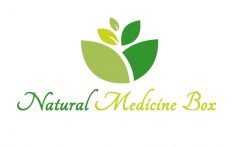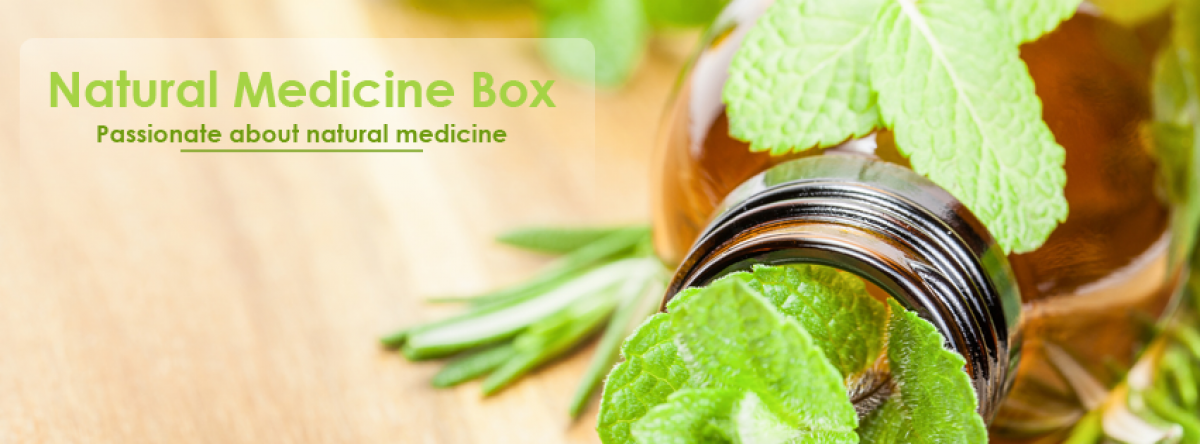Stackable potato chips, such as Pringles, are an all-time favorite snack. There are, however, many concerns regarding their health implications. First, they could hardly be called potato chips, as their potato content is minimal. Second, they are infused with toxic substances, some of them recognized carcinogens (and this is why potato chips are one of the top 5 cancer causing foods to avoid). Pringles are so hazardous they should carry a cancer warning label.
What are Pringles made of?
You might be surprised to find out that the main ingredients of this iconic product are rice, wheat, corn and potato flakes. These are mixed into a dough-like substance and heavily processed until they reach the familiar curve that makes Pringles fit into one another.
The Pringles Company themselves once argued (in order to avoid tax on ‘luxury foods’) that their chips is technically not potato chips due to the low potato content.
Cancer-causing chemicals inside potato chips
The most (in)famous of the dangerous substances found in chips is acrylamide. It’s a byproduct of the processing and gets created when carbohydrate-rich foods are exposed to high temperatures – during baking, frying, roasting or toasting.Acrylamide is a known carcinogen and is also potentially toxic to the brain. Food that is heated at temperatures above 100oC (212oF) may contain acrylamide. The worst culprits are potato chips and French fries. But other food contains it as well, such as bread crust, roasted coffee beans, roasted breakfast cereals and processed snacks.
The amount of acrylamide that has been deemed safe for human consumption in drinking water is 0.12 micrograms in an 8-ounce glass of water or 0.5 parts per billion (ppb). When the FDA checked acrylamide content in some of the most common food products, the levels were surprisingly high. Pringles Original Potato Chips had 693 ppb, and Pringles Sweet Mesquite BBQ Flavored Potato Crisps had up to 2510 ppb!
Potato chips companies promised to reduce the acrylamide content in their products. This is easier said than done. According to the EU project, known as Heat-Generated Food Toxicants (HEATOX), you cannot simply eliminate acrylamide.If you heat food at high temperatures, the levels of acrylamide can be reduced by 40% at the most when using all the known methods.
EATOX’s scientists also established that altogether there aremore than 800 heat-induced compounds, of which 52 are potential carcinogens. Some of the dangerous substances created in high-temperature cooking include:
- Heterocyclic Amines (HCAs) – found in charred meat.
- Polycyclic Aromatic Hydrocarbons (PAHs) – found in excess smoke that can form during cooking when fat drips onto the heat source.
- Advanced Glycation End Products (AGEs) – found in cooked, pasteurized and sterilized food; it’s a creator of oxidative stress in the body.
The Search for ‘Healthful’ Chips Continues…
Like a modern-day search for the Holy Grail, chip manufacturers keep searching for methods to improve the image of their health-harming but profitable snacks. For example, by the end of 2011, about half of Pepsi’s Frito-Lay brand snacks will be reformulated with all-natural ingredients. The switch is part of PepsiCo’s master plan to tap into the healthy foods market share. The Wall Street Journal8 recently reported the company hopes to boost their nutrition business from $10 billion to $30 billion by 2020.
The company will remove dietary hazards like monosodium glutamate (MSG), replacing it with natural seasonings, such as molasses and paprika. Artificial colors will be replaced with beet juice, purple cabbage, and carrots. All in all, about different 60 snacks are scheduled to get an all-natural makeover.
This is certainly a good example of how consumer demand can alter the direction of food manufacturers in a positive way.
The reformulated chips may end up being less bad for you than the original formulations. However, chips will never be truly healthful. All-natural chips may be the lesser of two evils, but if consumed regularly, they will still push your health in the wrong direction… There’s no getting away from the fact that modern plagues such as cancer, heart disease, obesity, and diabetes have a dietary component, and potato chips and French fries will always be a losing bet if you want to avoid becoming another disease statistic.How to Avoid Heat-Induced Toxins in Your Diet
Ideally, you should consume foods that are raw or minimally processed to avoid these types of toxic byproducts—the more raw food, the better. At least one-third of your foods to be consumed raw. Personally, I consume about 80 percent of my food raw, and I find it is one of the most important factors that help keep me healthy.
It may take you awhile to switch over to a less processed diet, but throwing out the most obvious culprits would be a great start.
These would include:
- French fries and potato chips
- All sodas (both regular and diet, as artificial sweeteners may be more problematic than fructose)
- Doughnuts
Healthy Eating Made Easy
Aside from creating potentially toxic byproducts, cooking and processing also depletes the food of valuable micronutrients, which is another reason for eating as much raw food as possible. This includes protein sources, such as eggs. Raw whole eggs from organic, pastured chickens are an incredible source of high-quality nutrients that many are deficient in. Raw milk is another good example of a food that is beneficial in its raw state but becomes harmful after it is pasteurized.
By opting for foods that will benefit your health, such as raw, preferably organic and/or locally-grown vegetables, organic grass-fed meats, healthy oils, raw dairy, and raw nuts and seeds, you can change your health for the better. These are the foods that are truly natural, and quite easy to prepare once you get the hang of it.
For a step-by-step guide to make the transition to a healthier diet as simple and smooth as possible, simply follow the advice in my optimized nutrition plan .
Remember, eating fresh whole foods is the “secret” to getting healthier, losing weight and really enjoying your food. It’s unfortunate that so many are under the mistaken belief that it’s “next to impossible” to create a meal without processed foods. Bruce Weinstein and Mark Scarbrough tackle this issue head-on in their book Real Food Has Curves,9 which is a great starting point to “relearn” the basics of how to enjoy and prepare real food.
Once you get used to it, you’ll find you can whip up a healthful meal from scratch in the same amount of time it would have taken you to drive down the street to pick up fast food. The main difference will be greater satisfaction, both physically and mentally, and perhaps even financially, as processed foods typically end up being more expensive than cooking from scratch.
What do you think about this. Are you going to avoid at all costs, or are you one of those people who thinks a little bit of what you fancy can do no harm. It’s all about balance isn’t it. Comment below.
Sources:
healthyandnaturalworld.com
mercola.com
Images: Flickr



Rob I know you love these, but I love you more my friend read this!
Darris Rushing, have a great day NO Pringles please!!!
sawdust?
Emery Westrich check this out!
Saw dust, chalk dust, tar and more are toxins commonly known as FILLERS (with a more scientific name, of course)in almost EVERY product sold today. Look it up. The FDA doesnt care about your health…the fda wants more money for less healthy products. Do the research, gain the knowledge, spread the word.
Disgusting
Kelsa Harten Kalee Harten I just bought these. ..although I haven’t eaten any for years!
Ewe disgusting
That sucks! We love(loved) Pringles!! 🙁
Great read! Ugh Johnathan loves Pringles … I read this to him, he said ” well don’t give me them anymore” love it! Thanks
Molly Morales Shannon Westbrook Kacy Knight Penny Hranicky
Yuk. .gross…no more Pringles for our household…
Stopped eating these years ago because they have msg….they’re killing us for the sake of money.
Glad ive not had these chips in years !
No more
Gave it up a few years ago
I love Pringles. 🙁
Baked lays tastes just like Pringles. Probably has the same fillers.
Rehab Eid
Abdullah Eid
Nidal Salamah
Hanan Eid
Marie ReRe Welcome Simeon Welcome read up!
I can’t eat them I have an allergic reaction every time
I don’t eat Pringles Vanessa Welcome
Omg
Wtf just bought 4 , cans
I didn’t know. Ewwww…
Gross
Yeah, what about Lays?
Nicole Bachman another reason to change what we eat
Won’t eat Pringles anymore.
Damnit, Mr Pringles! I’ve trusted your face on that can for years!!!
Yea I stopped eating them a year ago when I found out lol
I remember we were trying to tell u abt it… glad u stopped eating those yucky things! 😮
Aye they were bomb tho! Haha but yea no mas.
That jar of Pringles sure was good, glad I’m alive to tell the story
Maaaaan
Very interesting! I’m glad I never liked Pringles
I’m going to go on a Pringles buying spree! Seriously people, don’t believe everything you read.
Eat them. But not all in one go. LoL.
Eat them as a treat every now and again. I am sure they put crack in them to get you hooked. LoL
Unfortunately, the ingredients speak for themselves. But, carry on eating them in moderation.
I ad mire your restraint. LoL.
Don’t give them up. Just have in moderation.
Everything in moderation.
Sooo chips are badddd for you???? Huh.. Who knew?!?
As they say
You want a little arsnic or a lot?
This is fake information. How sad the world is.
Once again fake information!! Shame on the people who put stuff like this on here.
There is nothing real about these ,America is blind to what they are eating,that’s what’s sad! ALL PROCESSED FOODS
They put $#%&!@*nic in apple juice, so why not chips?
Alarmist drivel
Shannon Grengs this takes the fun out of our Pringles for sure.
As a kid I loved them but my parents never would buy them………as an adult I found them to be nasty so I never buy them…….really I dislike 99% of chips anyway nasty salty things
They are gross anyway. Ewww
What about Lays?
I keep telling people and they don’t listen
Megan Castleberry
Courtney Castleberry
My mom always says “hard of hearing will have to feel”
Not sure.
Everything in moderation Dawn. Once in a while is not going to kill you.
Hi Ann, I think you’ll find there is evidence to back the claims. The $#%&!@*le, admittedly, is very sensationalist.
I know for a fact it’s false. Maybe you should come to our plant and take a tour.
If you aren’t aiming to turn people against a product then don’t put garbage like this out there. I’m sick of articles like this!! Everything is gonna kill you anymore!!!
Yep groups like this take the fun out of eating period…. Its sad!
Skittles are 1 molecule away from being plastic too!
LMAO! Who falls for this crap???
NMB is not interested in facts, Ann. They’re only interested in spreading fear propaganda.